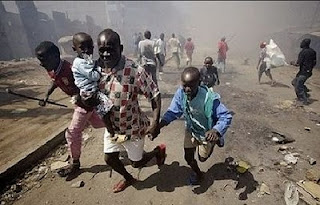Prayers for Domestic Violence Awareness Month

October, 2010 Since 1981, October has been designated as Domestic Violence Awareness Month. Domestic Violence is a problem that cuts across all religious, cultural, racial, social, and economic class lines. The color of Domestic Violence Awareness Month is purple – many people wear purple ribbons to remember the victims of private violence, where it takes place behind closed doors. Here is the text of a proclamation by President Obama about Domestic Violence Awareness Month and why it is so important to consider this issue carefully in every family and every community. NATIONAL DOMESTIC VIOLENCE AWARENESS MONTH, 2009 BY THE PRESIDENT OF THE UNITED STATES OF AMERICA A PROCLAMATION Domestic violence touches the lives of Americans of all ages, leaving a devastating impact on women, men, and children of every background and circumstance. A family's home becomes a place of fear, hopelessness, and desperation when a woman is battered by her partner, a child witnesses the abuse of a loved...

+after+Gerhard+Richter.gif)